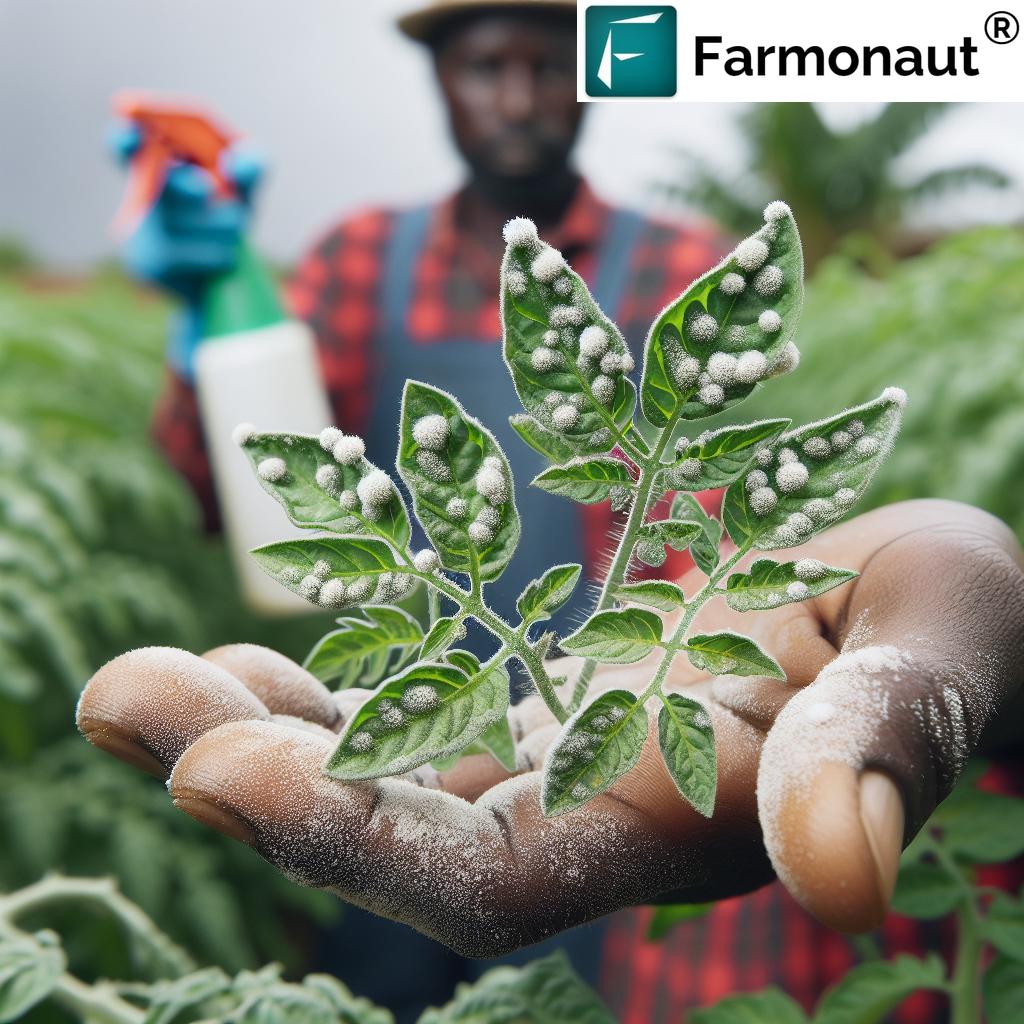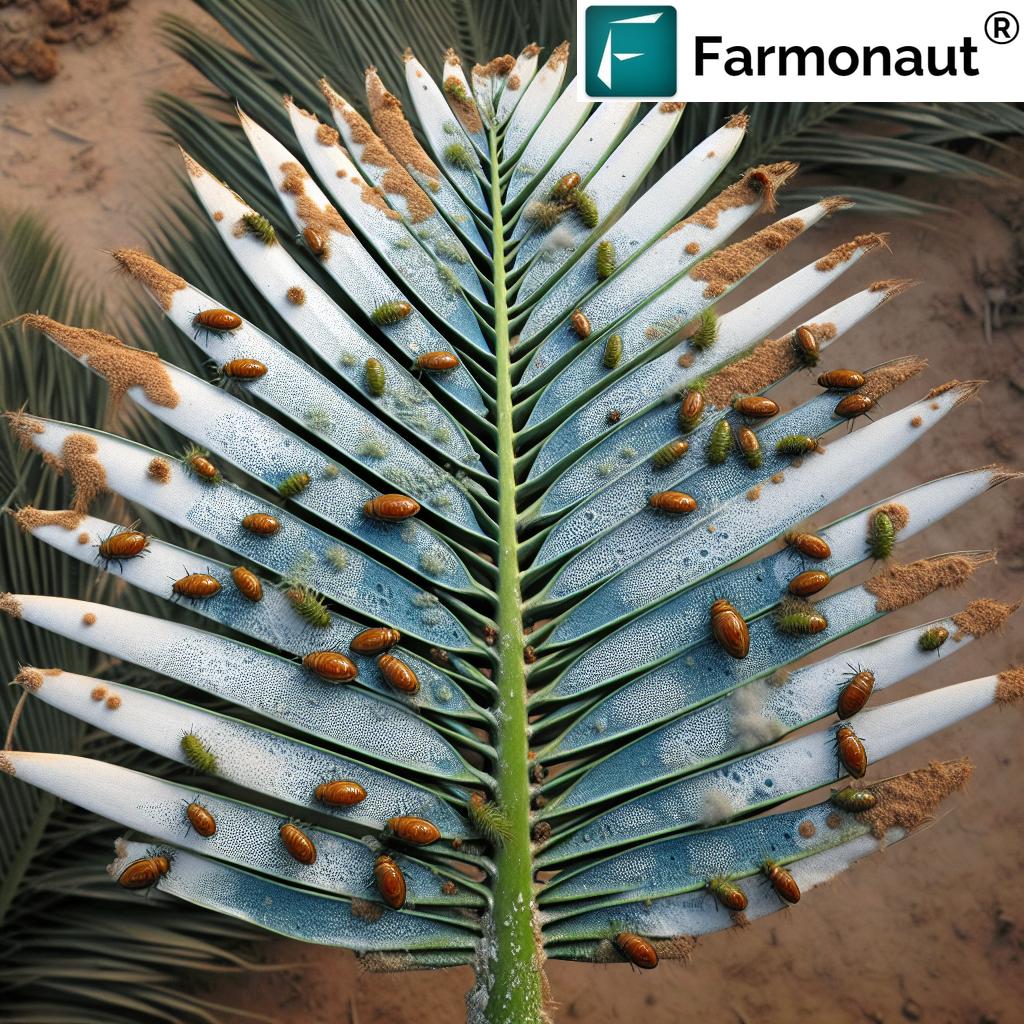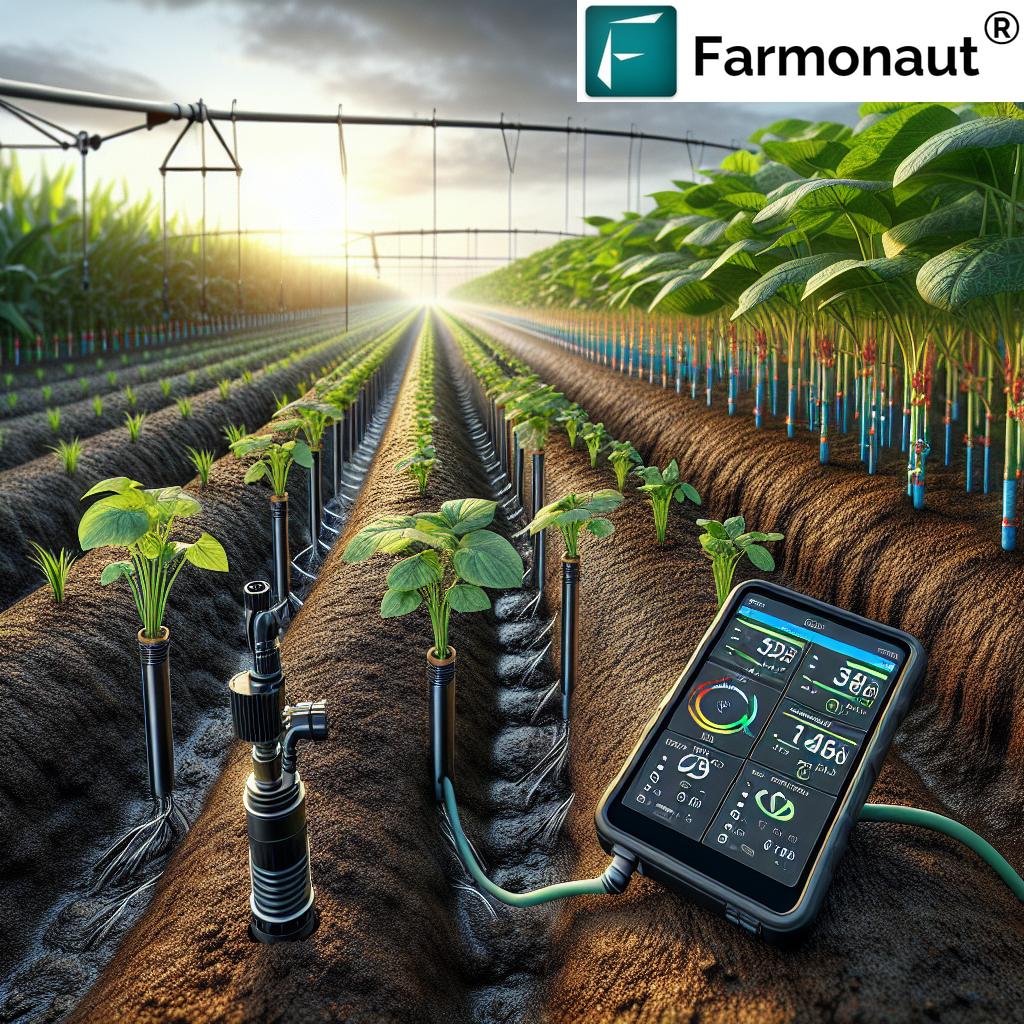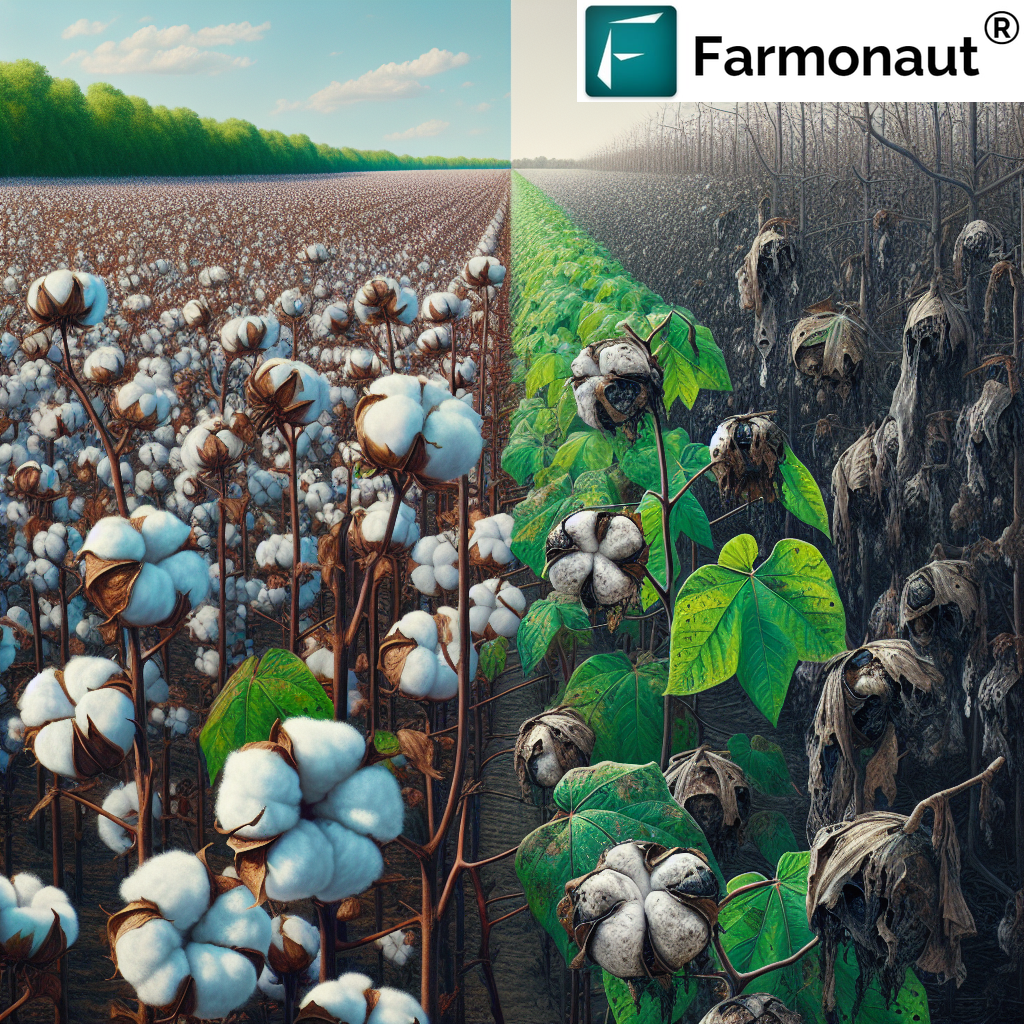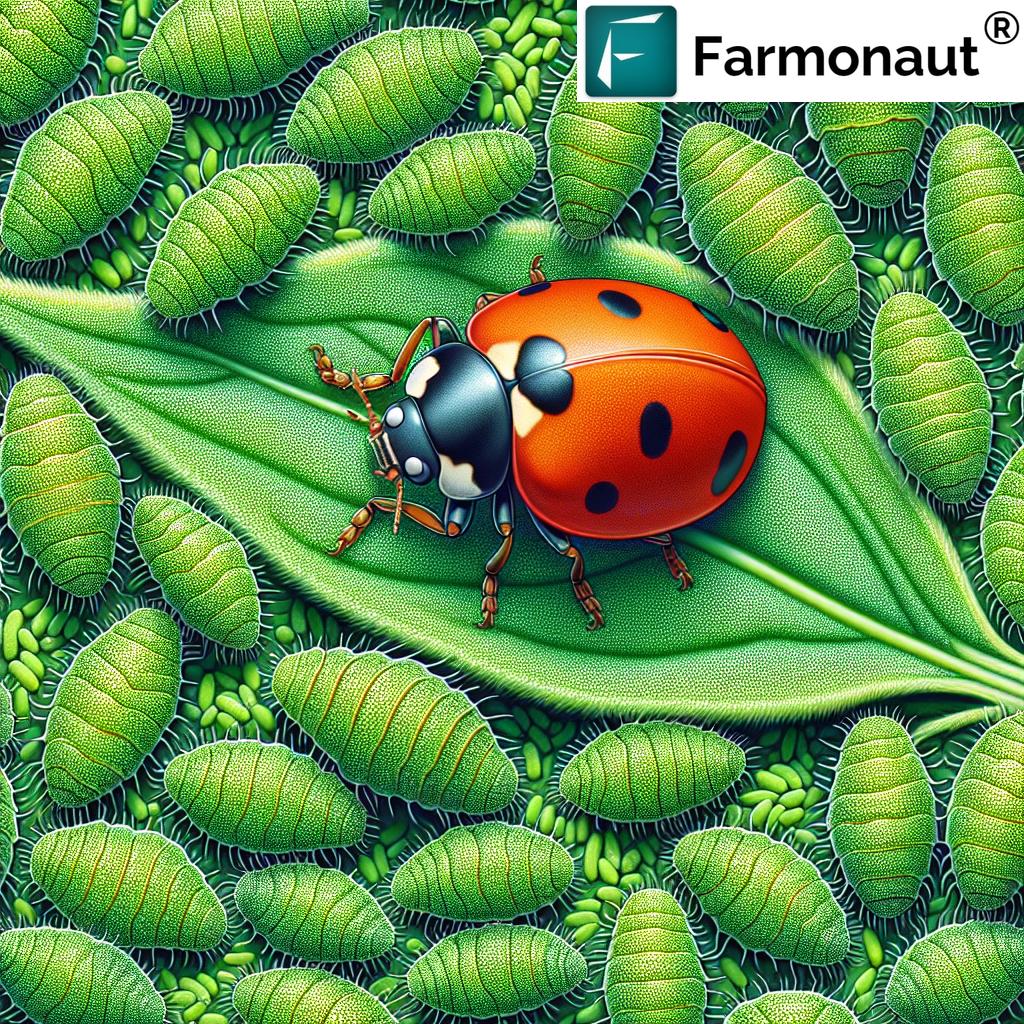Advanced Irrigation Inc: Crop & Pest Tech Innovations 2025
Meta Description: Advanced irrigation inc, advanced pest innovations, and precision crop production technology are transforming agriculture in 2025—discover efficiencies that boost yields, reduce water use, and drive sustainability across global farms.
“In 2025, precision irrigation systems can reduce water use by up to 35% compared to traditional methods.”
Introduction: The 2025 Agricultural Revolution
In 2025, advanced crop production technology, led by the global influence of Advanced Irrigation Inc and advanced pest innovations, has swiftly become the cornerstone of efficient and sustainable agriculture. As populations rise and climate challenges intensify, the sector faces the dual mandate to increase yield while preserving precious resources and minimizing environmental impact.
Global technologies are transforming traditional methods—ushering in a revolution in irrigation, pest management, and overall crop production. From smart moisture sensors and satellite analytics that monitor soil health and weather in real time, to digital pest detection and AI-driven advisory platforms, this new era is driving efficiency, enhancing yields, and ensuring our agricultural future is both optimized and resilient.
Below, we delve deep into the latest developments — from precision irrigation to pest control, from digital farm management to blockchain-enabled traceability, outlining the impacts, applications, and benefits of these innovations for farmers, stakeholders, and the world at large.
Precision Irrigation: The Future of Water Management
One of the most significant challenges in modern agriculture is water scarcity; efficient use of water resources is crucial as climate variability and irregular rainfall become the new norm. Smart solutions from Advanced Irrigation Inc have evolved to address this issue, enabling precise delivery of water to crops, tailored to specific needs—dramatically reducing waste and boosting yields.
Smart Irrigation Systems: From Drip to VRI
- Drip Irrigation: Delivers water directly to the root zone, minimizing runoff and evaporation loss.
- Micro-Sprinkler Systems: Provides controlled, uniform distribution with efficient consumption.
- Variable Rate Irrigation (VRI): Customizes watering patterns across different zones in a field using sensors and analytics.
By integrating devices such as advanced sensors, satellite data, and AI-driven analytics, today’s irrigation systems monitor soil moisture, weather forecasts, and crop health in real time. The systems automate water application, ensuring each crop receives the optimal amount based on soil type, stage of growth, and climatic conditions.
Malawi Irrigation Tech 2025 | Solar-Pump Secrets That Triple Yields
Impact of Advanced Irrigation in 2025
- Water Conservation:
Smart irrigation can reduce water usage by 35-50% compared to traditional flooding. - Lower Costs:
Reduces irrigation time, labor costs, and energy use. - Improved Resilience:
Helps crops withstand drought and irregular rainfall. - Minimized Runoff:
Lowers the risk of soil erosion and nutrient loss.
In regions like Peru, India, and sub-Saharan Africa, these innovative solutions have become cornerstones for food security and sustainability.
See how irrigation megaprojects and AI precision farming turbo-charge exports in Peru in 2025.
Peru Irrigation Boom: AI & Megaprojects Power Agricultural Exports
How Advanced Technologies Enable Smart Irrigation
- IoT-Enabled Devices: Sensors continuously monitor soil conditions and plant needs in real time.
- Satellite Imagery: Remote monitoring provides updates on moisture levels, crop variability, and stress factors.
- AI & Analytics Tools: Analyze data to automate and optimize application of water, fertilizers, and other inputs.
- Integration with Climate Forecasts: Adapts irrigation cycles to weather predictions for maximum efficiency.
In the context of 2025 and beyond, these methods are not just for large farms. Smallholder farmers gain access through affordable subscription services and government incentives, ensuring a broader impact on global food security.
Farmonaut’s apps bring advanced satellite monitoring and AI-powered insights into farmers’ hands, wherever they operate. From moisture tracking to smart field management, these platforms empower agricultural stakeholders globally. Explore the Farmonaut API here or visit the API Developer Docs for technical integration.
Advanced Pest Innovations: Securing Crop Health Amid Climate Uncertainty
“Sustainable pest management technology increases crop yields by an average of 20% in tech-adopted farms in 2025.”
Crop health is perpetually threatened by pests, making advanced pest innovations a critical aspect of integrated crop management in 2025. Traditional methods—heavy dependence on chemical pesticides—often cause negative impacts such as resistance, environmental pollution, and harm to beneficial organisms.
Smart and Sustainable Pest Control Methods
- Biological Controls: Use of predatory insects, parasitoids, and entomopathogenic microbes for natural pest suppression.
- Gene-Edited Crops: Engineered for pest resistance—providing inherent protection, reducing chemical reliance.
- Digital Pest Monitoring: Drones, AI camera traps, and in-field sensors enable early, targeted interventions with minimal chemical application.
- Microbial Biopesticides: Biodegradable formulas targeting specific pests, leaving non-targets and the environment unharmed.
Breakthrough: Spinach Peptide Bio-Pesticide Dramatically Improves Citrus & Potato Yields in 2025
In 2025, advanced pest innovations conveniently integrate with precision irrigation and digital monitoring systems. By minimizing chemical input, these technologies help preserve beneficial organisms, reduce pollution, and cut overall costs for farmers.
Digital Tools for Pest Detection & Targeted Response
- Field Drones: Rapid aerial surveys to detect pest outbreaks at early stages, minimizing damage.
- AI Camera Traps: Real-time image analysis identifies pest species and hotspots for targeted control.
- Satellite Surveillance: Wider area monitoring reveals abnormal plant stress signatures associated with pest activity.
- Decision Support Platforms: AI tools aggregate and analyze data, suggesting optimal interventions and timing.
See How AI Drones Are Saving Farms & Boosting Yields in 2025
Consequently, crop losses are substantially reduced, while the frequency and intensity of pesticide applications drop by up to 60% on tech-enabled farms—benefiting both environmental health and farmer profitability.
Genomic Advances: The New Age of Pest-Resistant Crops
Breakthroughs in plant breeding and genetic engineering continue to deliver crop varieties that are resistant to local pest populations. These varieties require fewer chemical interventions, reduce resistance buildup, and sustain yields under climate stress conditions—anchoring future food security.
Integrated Pest Management for All Regions
- Integrated Pest Management (IPM): Combines biological, digital, genomic, and chemical solutions as warranted—optimizing efficacy and sustainability across different regions and cropping systems.
- Smallholders and Tech Accessibility: The democratization of digital pest monitoring tools ensures that both large and small farms can access the benefits of precision pest control.
Advanced Crop Production Technology: Beyond the Field
Advances in crop production technology have expanded beyond irrigation and pest control. New systems are reshaping the landscape of farming, yield, and resource efficiency for 2025 and beyond.
Controlled Environment Agriculture (CEA): Urban & Sustainable Farming
- Vertical Farming: Multi-layered, indoor crop systems that multiply yield per square meter and reduce water use by up to 90% compared to open fields.
- Hydroponics and Aeroponics: Soil-free techniques circulating precisely tailored nutrient solutions, minimizing disease and reducing input waste.
- LED Lighting: Customized photoperiodic lighting optimizes photosynthesis and crop growth, regardless of external seasonality.
Explore the Future: Smart Farming, Precision Tech & AI in 2025
CEA and urban farming are rapidly expanding, ensuring food supply stability in regions with poor soils or high urban density. Yields are predictable and high, inputs are optimized, and resource footprints are minimal.
Precision Agriculture in Open Fields
- GPS-Guided Machinery: Ensures accurate planting, spraying, and harvesting—reducing input wastage and improving crop uniformity.
- Drones and Remote Sensing: Rapid crop scouting for disease, moisture stress, and nutrient deficiencies.
- AI-Driven Analytics: Platforms process big data from multiple sources, suggesting optimal field management strategies.
Learn How to Monitor Crops with Satellite & AI Using the Farmonaut Web System
For instance, variable-rate technology enables input application—such as fertilizers and pesticides—only where needed, reducing runoff and soil erosion. AI platforms help to plan harvest timing and market logistics, boosting profitability.
Biotechnology and Plant Genomics
- Climate-Resilient Varieties: Crops engineered for drought tolerance, salinity resistance, and nutrient efficiency thrive under changing climates.
- Genome Editing Tools: CRISPR and related technologies accelerate the development of varieties tailored to new pest or disease threats.
- Biofortified Crops: Enhanced nutrition ensures food security for growing populations worldwide.
With the help of advanced agricultural technologies, farmers globally are witnessing improved resilience, enhanced yields, and reduced environmental impacts.
Satellite, AI & Digital Platforms: Leading Edge Farm Management
Digital transformation is supercharging agriculture in 2025—thanks to satellite imagery, artificial intelligence, and mobile apps.
Satellite Data & AI Analytics in Precision Farming
- Real-Time Crop Monitoring: Multispectral images track vegetation health (NDVI), plant growth, moisture stress, and soil variability across fields and regions.
- Weather Forecasting & Risk Management: AI models analyze global patterns and local microclimates to provide tailored forecasts for irrigation and pest management decisions.
- Fleet Management: Logistics tools optimize resource allocation, lowering operational costs and ensuring efficient use of machinery.
- Digital Traceability: Blockchain technology tracks the journey of each crop batch, building trust and transparency in supply chains.
- Resource Efficiency Analysis: SaaS platforms offer carbon footprinting tools for regulatory compliance and sustainability monitoring.
JEEVN AI: Transforming Smart Farming with Satellite Data & Precision Analytics
Integration for Sustainable, Scalable Solutions
- API Access for Developers: Enables seamless integration of crop, irrigation, pest, and environmental monitoring into custom systems (see here).
- Blockchain for Food Safety: Ensures transparent record-keeping from planting to market (farm-to-fork traceability).
- Loan & Insurance Tools: Satellite-based verification expedites risk assessment and supports financial inclusion (crop loan and insurance eligibility).
- Scalable Farm Management: Platforms like Farmonaut Large Scale Farm Management (web and app) allow agribusinesses to monitor thousands of hectares effectively.
Regenerative Agriculture: Soil Health & Climate-Smart Solutions in 2025
The synergy of satellite technology, AI, sensor networks, and blockchain is revolutionizing agricultural management—making sustainable farming a realistic, measurable, and profitable endeavor in 2025.
Table: Impact of Advanced Irrigation & Pest Management Technologies (2025)
| Technology Type | Key Features | Estimated Yield Improvement (%) | Estimated Water Savings (%) | Pest Reduction (%) | Sustainability Impact |
|---|---|---|---|---|---|
| Drip Irrigation Systems | Precise root-zone watering, real-time moisture sensing, automated scheduling | 15–30% | 35–50% | 0% | High – Minimizes runoff & evaporation |
| Variable Rate Irrigation (VRI) | Custom soil and crop-based watering; AI/IoT control | 10–25% | 25–40% | 0% | High – Reduces water waste & improves efficiency |
| AI-Based Pest Detection | Drones, image processing, instant alerts, targeted pesticide use | 10–20% | 5–10% | 35–60% | High – Less pesticide runoff |
| Biological Control Agents | Predatory insects, microbial biopesticides, IPM integration | 8–15% | 0% | 40–70% | High – Protects biodiversity |
| Gene-Edited, Pest-Resistant Crops | CRISPR breeding, field pest resilience, fewer synthetic inputs | 10–25% | 0% | 40–80% | High – Lower chemical usage |
| Hydroponic / Aeroponic CEA | Soilless growth, recirculating water, integrated nutrient dosing | 30–50% | 80–90% | 25–40% | Very High – Minimal land & chemical use |
| Satellite Monitoring & Analytics | NDVI, drought prediction, resource optimization, AI-based management | 15–35% | 10–20% | 20–40% | High – Data-driven sustainability |
| Blockchain Traceability | Transparent records, anti-fraud, safe food chain | 3–10% | 0% | 0% | Moderate – Improves trust & compliance |
*All values represent industry-wide estimates and may vary by geography, crop, and local management systems.
Smart Farm Management with Farmonaut: Satellite, AI, Blockchain & More
At Farmonaut, we recognize how global agriculture continues to face climate challenges, resource limitations, and mounting food demand. Our mission is to democratize access to advanced irrigation inc level technologies and innovations that help farmers, businesses, and governments optimize crop health, environmental impact, and operational efficiency.
- Satellite-Based Monitoring: Our platform delivers multispectral image analytics for soil, moisture, crop growth, and stress, providing actionable, real-time insights for field and plantation management.
- JEEVN AI Advisory: The AI-powered JEEVN delivers tailored weather forecasts, pest management alerts, irrigation schedules, and customized agronomic advice to improve productivity.
- Blockchain Traceability: With traceability tools, we support transparency in agricultural and forestry supply chains. This ensures every product batch is securely recorded and verifiable from source to end user.
- Fleet & Resource Management: Our fleet management services enhance the logistics and safety of agriculture operations, allowing for the efficient use of machines and field crews.
- Environmental Impact Tracking: We offer carbon footprint monitoring and regulatory analytics, empowering organizations to track and reduce environmental emissions.
Get the Most from Your Fields: Monitor via Satellite & AI on Farmonaut
Our solutions can be easily accessed on web, Android, and iOS, or seamlessly integrated into existing business operations and analytics tools via API. Learn how our large-scale monitoring empowers enterprises to track resources across thousands of hectares.
Farmonaut: Solutions & Integration for Every Need
- Traceability: Secure blockchain-enabled verification of agriculture and forestry supply chains—enhancing trust, minimizing fraud, and meeting global export standards.
- Crop Loan and Insurance: Satellite-based risk verification is unlocking access to credit and insurance for smallholders and agri-businesses.
- Fleet Management: Track, optimize, and ensure the safety of farm vehicles, equipment, and staff—all from a single dashboard.
- Large Scale Farm Management: Monitor resources, coordinate teams, and keep an overview of every crop cycle with enterprise-grade technology.
- Crop Plantation & Forest Advisory: Access crop and forestry analytics, NDVI, soil moisture, and expert guidance across platforms.
Farmonaut: Powering Smart Farming Today & Tomorrow!
Sustainability and the Future of Global Agriculture
The momentum toward sustainable agriculture in 2025 is unmistakable. As advanced irrigation inc, advanced crop production technology, and advanced pest innovations become more accessible, farmers everywhere are empowered to adapt their practices—reducing water and chemical use, optimizing resources, improving yields, and preserving the environment.
Key Benefits Realized in 2025:
- Resource Conservation: Lower water, fertilizer, and pesticide requirements foster sustainability.
- Lower Environmental Impact: Reduced runoff and emissions mitigate pollution and combat climate change.
- Biodiversity Preservation: Minimal chemical inputs and integrated pest management support beneficial organisms.
- Economic Efficiency: Automated, optimized processes lower labor and input costs while enhancing farmer incomes.
- Social Resilience: Sustainable yields and income stability help rural communities thrive despite climate stressors.
- Food Security: Resilient, high-yield systems secure nutrition for growing populations.
Wider adoption is supported by government incentives, private investment, and digital infrastructure that shrink the technology gap—even for smallholders in previously underserved regions.
FAQ: Advanced Irrigation Inc, Crop & Pest Tech Innovations 2025
What is Advanced Irrigation Inc and how is it changing agriculture in 2025?
Advanced Irrigation Inc refers to the new paradigm of precision, data-driven irrigation management using IoT-enabled devices, sensors, satellite data, and AI analytics. It automates water delivery, reduces waste, and adapts in real-time to plant and weather needs, making agriculture more resilient and productive in 2025.
How do advanced pest innovations reduce environmental impact?
Advanced pest innovations leverage biological controls, AI detection, and gene-edited crops to minimize chemical pesticide use. This reduces pollution, supports beneficial insect populations, and lowers health risks for farmers and consumers.
How can farmers integrate these advanced technologies on small farms?
Thanks to affordability and mobile accessibility, smallholders can now use digital farm platforms (like Farmonaut), smart sensors, and subscription-based precision systems to access the same benefits as large-scale operations—optimizing resource use and boosting yields.
What role does satellite and AI technology play in crop management?
Satellite imagery and AI provide real-time insights on soil moisture, plant health, pest risks, and weather patterns. This data enables timely, informed decisions, reducing crop loss and optimizing inputs—leading to higher efficiency and profitability.
What is the future outlook for global agriculture with these technologies?
The integration of advanced irrigation, pest management, and crop production technologies—in conjunction with digital monitoring—will push global agriculture toward sustainability, resilience, and higher productivity, making it possible to feed growing populations while preserving the planet.
Conclusion: Embracing Agricultural Transformation
The convergence of advanced irrigation inc, advanced pest innovations, and advanced crop production technology in 2025 represents a fundamental transformation of global agriculture. Through smart systems, digital tools, and sustainable management, we address critical challenges: resource depletion, climate variability, rising demands, and environmental risk.
Companies like Farmonaut empower farmers, agribusinesses, and governments worldwide by providing real-time insights and decision support tools—making advanced data accessible, actionable, and affordable. This technological revolution is not only enhancing yield and profitability, but also securing the future of food and the environment.
As we look ahead, continued investment in research, infrastructure, and education will ensure these innovations are universally available—fueling a resilient, efficient, and sustainable agricultural sector for 2025 and beyond.
Ready to unlock the power of advanced crop production technology? Try Farmonaut’s solutions on web, Android, iOS, or integrate our API into your enterprise—driving a sustainable agricultural revolution, today and for the future.







